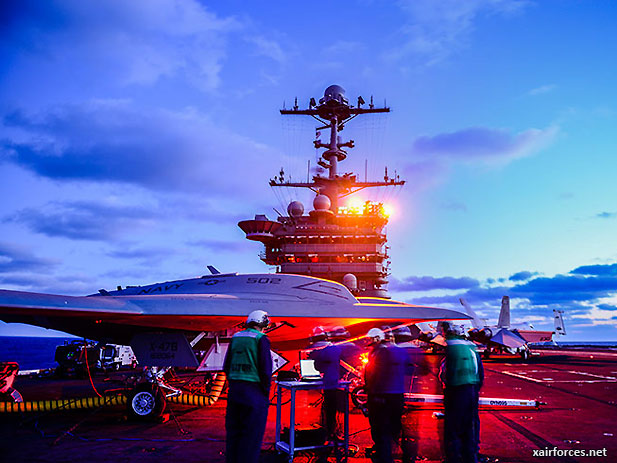
U.S. Navy shapes UCLASS acquisition strategy

Upcoming shore-based and carrier tests will help the Navy determine its acquisition strategy for the Unmanned Carrier Launched Airborne Surveillance and Strike System (UCLASS), a large, carrier-based, next-generation drone likely to have a large wingspan and high-tech sensors engineered to gather and send back images and data, service officials said.
“The UCLASS will be the first deployed carrier based unmanned air vehicle with persistent ISR and a strike capability,” said Navy spokeswoman Jamie Cosgrove.
There are two related and interwoven trajectories with this UAS technology; the Navy is currently testing an early “demonstrator” model of the aircraft while simultaneously preparing to conduct a full and open competition have the UCLASS ready to fly by 2018 to 2020, service officials explained.
At the same time, the demonstrator will inform the development of what will be the future UCLASS program and next-generation technological capability, said Capt. Jaime Engdahl, Unmanned Combat Air System Program Manager.
“The UCAS-D program is an essential early step that will demonstrate the suitability of a low observable relevant unmanned air system operating in the [carrier] environment. The X-47B UCAS {Umanned Combat Air System} demonstrator will conduct launch, recovery, and carrier controlled airspace [CCA] and flight deck handling demonstrations,” he added.
The 10-foot tall 44,000-pound Navy drone is slated for shore-based arrested landings at Paxtuent River, Md., and will then embark upon a series of tests aboard the USS George Bush in May, said Engdahl.
“During the test period, the UCAS-D test team will perform deck handling and ship integration tests, the first aircraft launches from the ship’s catapults, carrier approaches with the aircraft, and potentially the first carrier landings on the flight deck,” Engdahl explained.
So far, two UCAS-D aircraft have been built and delivered by Northrop Grumman, however, many vendors are expected to compete for the upcoming formal Navy competition to develop and build the UCLASS, Navy officials explained.
Two upcoming Requests For Proposal (RFP) are likely to shape the upcoming competition; a draft RfP for a Preliminary Design Review is slated for May to be followed by a formal Technology Development RFP a month later, Cosgrove said.
“We are demonstrating the technology and taking lessons learned from the UCAS-D effort to help the UCLASS program. We are still working on our acquisition strategy,” she added.
The UCAS-D conducted successful flight tests last December aboard the USS Truman, she added.
“Additionally, the UCAS-D program includes Automated Aerial Refueling (AAR) demonstration on a manned surrogate to prove out multiple AAR technologies. Lessons learned from UCAS-D support follow-on acquisition programs,” said Engdahl.
Source: dodbuzz.com News - 17 April 2013
Photo: The deck handling trials of the U.S. Navy X-47B UCAS-D aboard the USS Harry S. Truman (CVN-75) in Dec 2012 gave Navy sailors their first look at how unmanned systems can be integrated with carrier operations. (Photo by www.northropgrumman.com)
(17.04.2013)
|